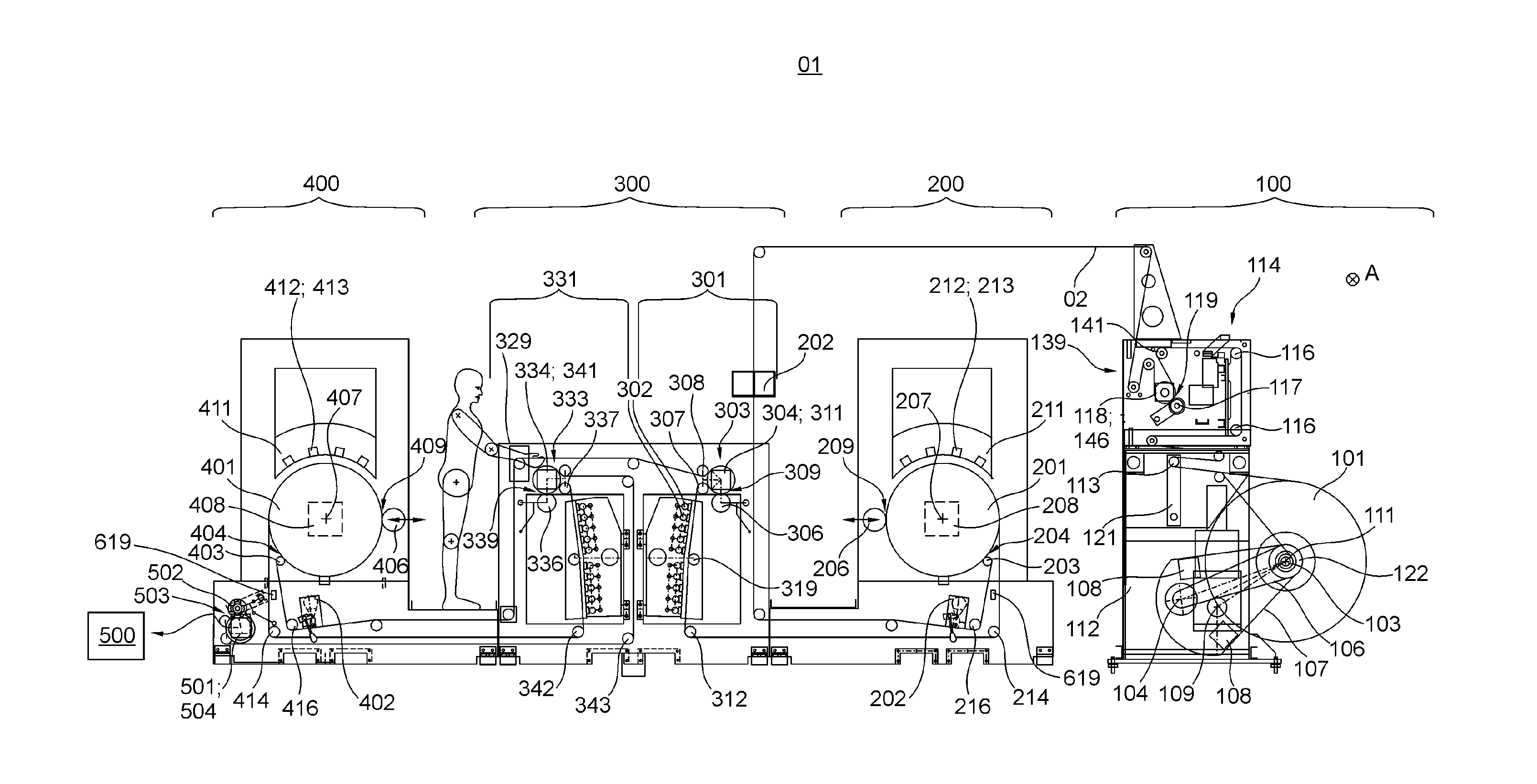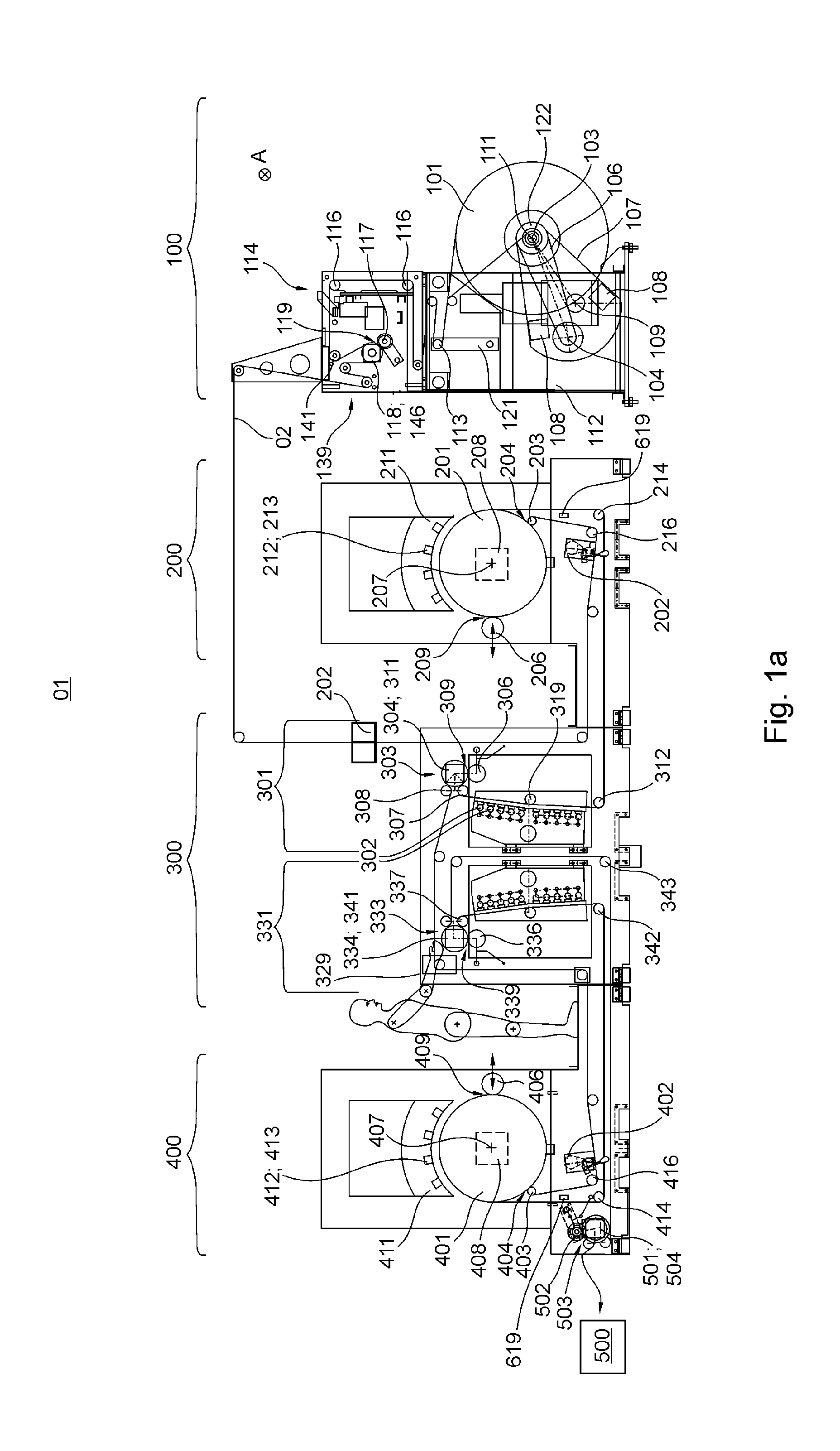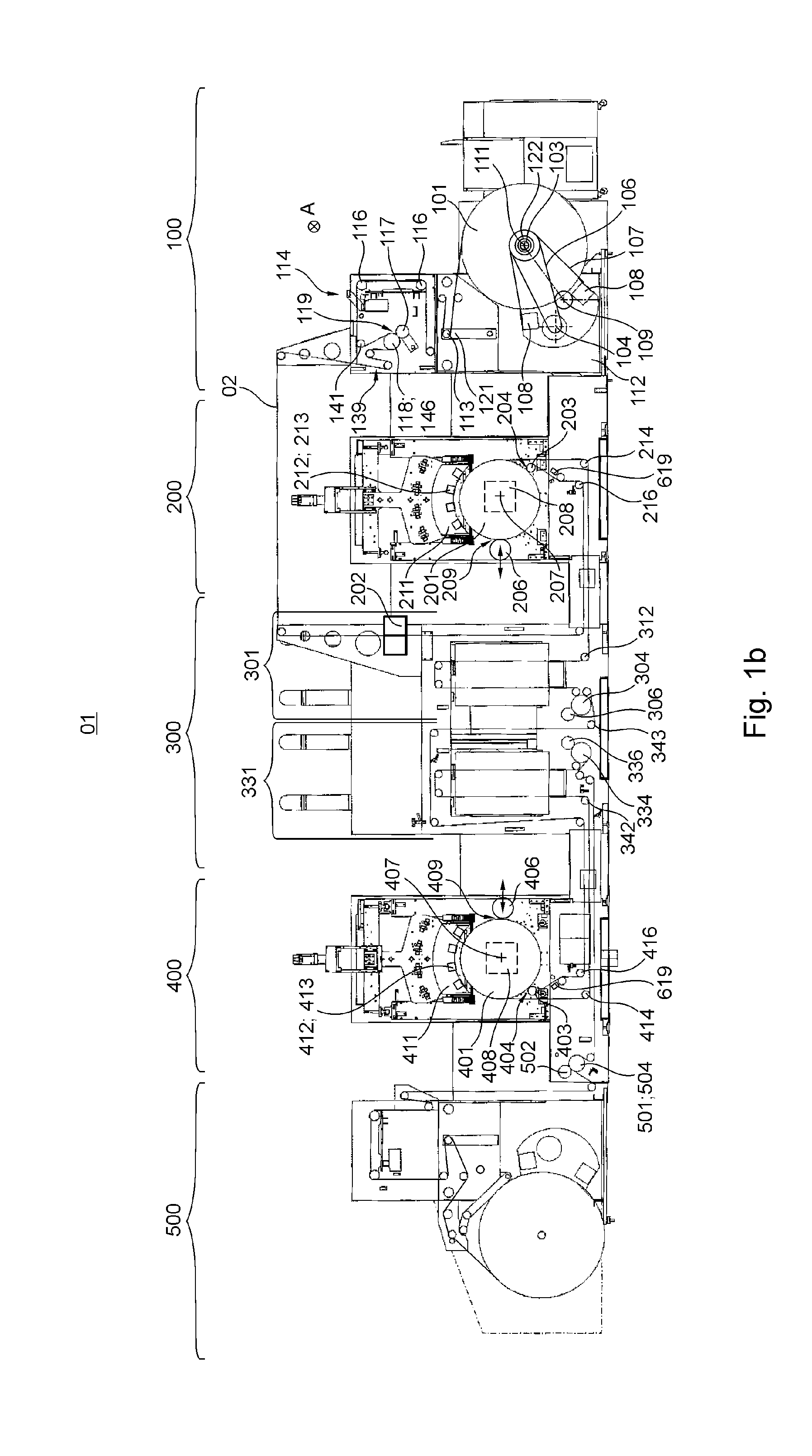Method for printing a material to be printed
a printing method and material technology, applied in the field of printing a material to be printed, can solve the problems of deformation of printing materials, registration and/or registration that no longer meet quality standards, etc., and achieve the effects of reducing the number of devices and operating steps, saving printing materials, and avoiding unnecessary defects in printed printing images
- Summary
- Abstract
- Description
- Claims
- Application Information
AI Technical Summary
Benefits of technology
Problems solved by technology
Method used
Image
Examples
Embodiment Construction
[0102]A printing machine 01 comprises at least one printing material source 100, at least one first printing unit 200, preferably at least one first dryer 301, preferably at least one second printing unit 400 and preferably at least one second dryer 331, and preferably at least one post-processing unit 500. Printing machine 01 is further preferably embodied as an inkjet printing machine 01. Printing machine 01 is preferably embodied as a web-fed printing machine 01, and more preferably as a web-fed inkjet printing machine 01. Printing machine 01 is embodied, for example, as a rotary printing machine 01, for example as a web-fed rotary printing machine 01, in particular a web-fed rotary inkjet printing machine 01. In the case of a web-fed printing machine 01, printing material source 100 is embodied as a roll unwinding device 100. In the case of a sheet-fed printing machine or a sheet-fed rotary printing machine, printing material source 100 is embodied as a sheet feeder. In printing...
PUM
 Login to View More
Login to View More Abstract
Description
Claims
Application Information
 Login to View More
Login to View More - R&D
- Intellectual Property
- Life Sciences
- Materials
- Tech Scout
- Unparalleled Data Quality
- Higher Quality Content
- 60% Fewer Hallucinations
Browse by: Latest US Patents, China's latest patents, Technical Efficacy Thesaurus, Application Domain, Technology Topic, Popular Technical Reports.
© 2025 PatSnap. All rights reserved.Legal|Privacy policy|Modern Slavery Act Transparency Statement|Sitemap|About US| Contact US: help@patsnap.com



